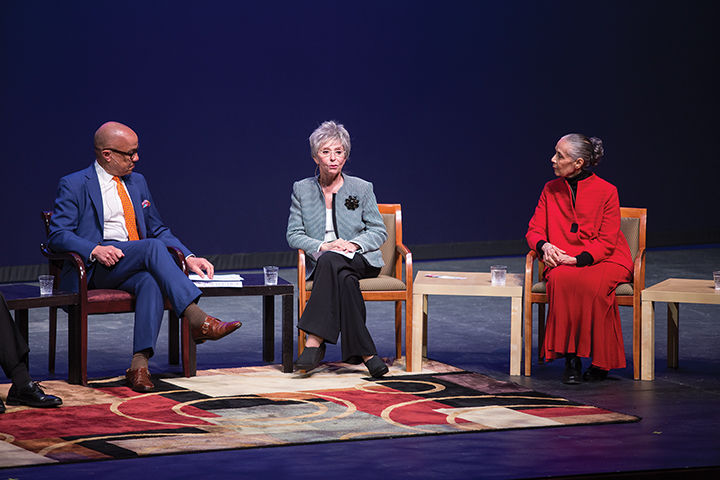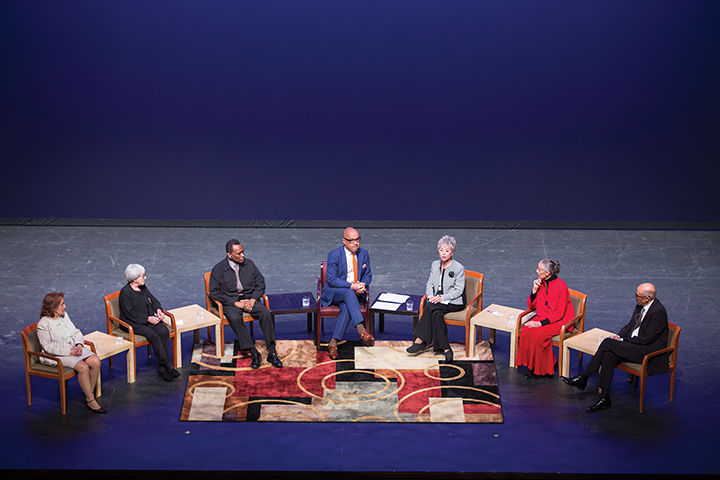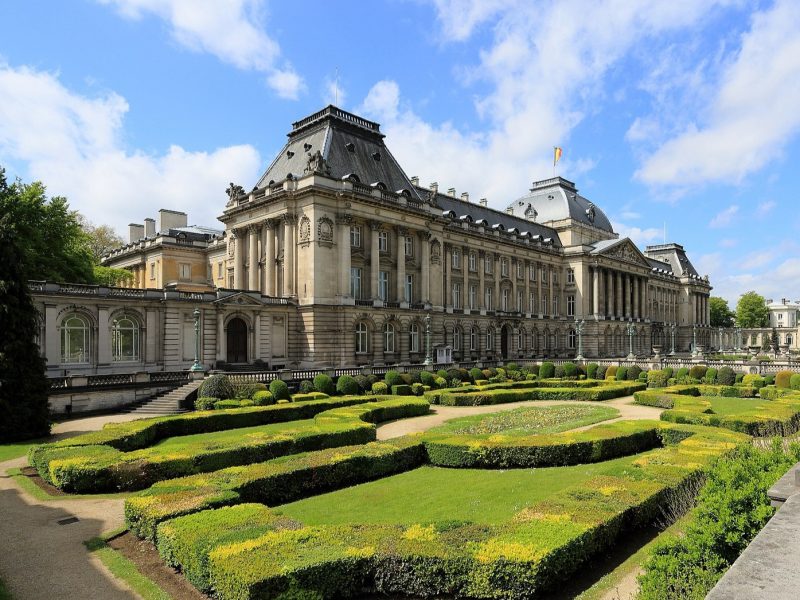When Rita Moreno started out as a Puerto Rican actress in Hollywood, she said she was often cast as what she called the “dusky maiden” — typically a young Latin girl who didn’t speak much English and had little education.
Eventually, the actress — most notably known for her role as Anita in the 1961 movie “West Side Story” — said she realized that’s how people in the industry actually viewed her.
“It was challenging,” Moreno said to a crowd of about 400 students, university staff, faculty and community members in the Clarice Smith Performing Arts Center on Thursday evening. “At that time, there were certainly no role models, none for someone like myself. There were no mentors.”
Moreno served on a panel with other dancers and artists at the “Diversity in the Arts” event — presented by the DeVos Institute of Arts Management — to discuss what it was like to enter the industry in the 1950s and ’60s as nonwhite professionals in the arts and what they feel the arts’ purpose is in modern-day society.
Arthur Mitchell, co-founder of the Dance Theatre of Harlem, detailed his previous challenges involving being a black professional ballet dancer in 1957, partnering with white dancers. In 1969, Mitchell was able to return to his Harlem hometown with a mission to bring dance and social change to the community.
“I started the school in Harlem, and it wasn’t very accepted at the beginning. … And when they saw we were trying to do things with the kids in a positive way, it went very, very well,” Mitchell said. “We took kids of the street and started making them go to school, reading; all the kids liked percussion, and we made them learn to read music.”
Venezuelan-American dancer Tina Ramirez, founder of Ballet Hispanico, said she, too, faced a lot of difficulty starting out as a dance teacher for young Latin dancers.
“At that time in 1964, I had a small dance studio and I was training young dancers, professional dancers, and no one was hiring Latin dancers,” Ramirez said. “Whenever they had ‘Puerto Rican Day,’ I did a dance from Puerto Rico. Whenever they had ‘Dominican Day,’ I did it, and whenever they had the ‘Spanish Day,’ I did it too, and still they couldn’t hire Latin American dancers.”
She said she founded Ballet Hispanico in 1970 because Hispanics were otherwise being excluded from the arts.
Annie Hankins, a graduate student in the public policy school, attended the event and said it was interesting to hear the panelists reflect on their own stories to see how much those events influenced their lives as artists.
“It was interesting hearing them talk about where they think the arts have come, where they are today and what the arts should be,” Hankins said.
The panel also touched upon the shifting role of arts and theater, indicating that advocacy and education are important in the arts today.
“We’re now searching for a new model of theater that doesn’t exist yet today, where the art and advocacy are one in the same,” said Lou Bellamy, the founder and artistic director of Penumbra Theatre Company. “It’s not good enough to just raise the consciousness now. Now we’ve got to take that step toward revolution or change.”
Dancer and actress Carmen de Lavallade said it is also important to make the arts accessible. She said she has seen the arts change young people’s lives, but there isn’t as much investment in the arts as there should be.
“It is a necessary part of our lives as human beings,” de Lavallade said. “[People] think that it’s a hobby. It’s not a hobby; it’s a lifesaver.”
University President Wallace Loh also voiced his support for the arts and arts education during his introduction to the panel. He said he views this university like a flower, with a strong stem composed of science, technology, engineering and math.
“But a complete flower has, at the top of the stem, a blossom. And that blossom is the arts and the humanities,” Loh said. “STEM fields may make our lives longer, more comfortable, more prosperous, perhaps, but the arts make life worth living.”
From left: Darren Walker, Rita Moreno and Carmen De Lavallade, speak on a panel about diversity in the arts in the Clarice Smith Performing Arts Center on March 12.
From left: Miriam Colon, Tina Ramirez, Arthur Mitchell, Darren Walker, Rita Moreno, Carmen De Lavallade, and Lou Bellamy, speak on a panel about diversity in the arts in the Clarice Smith Performing Arts Center on, March 12.





